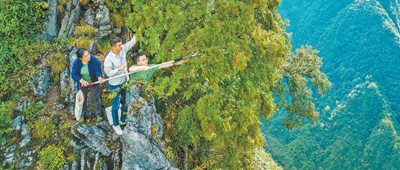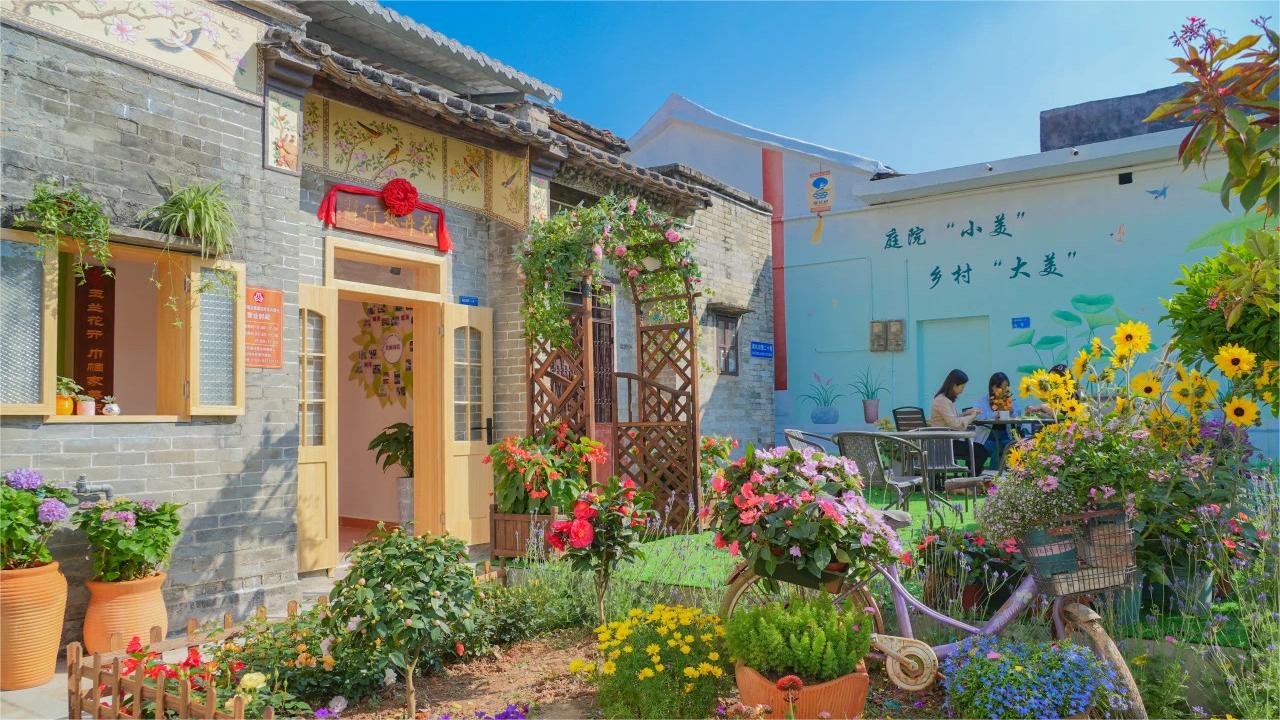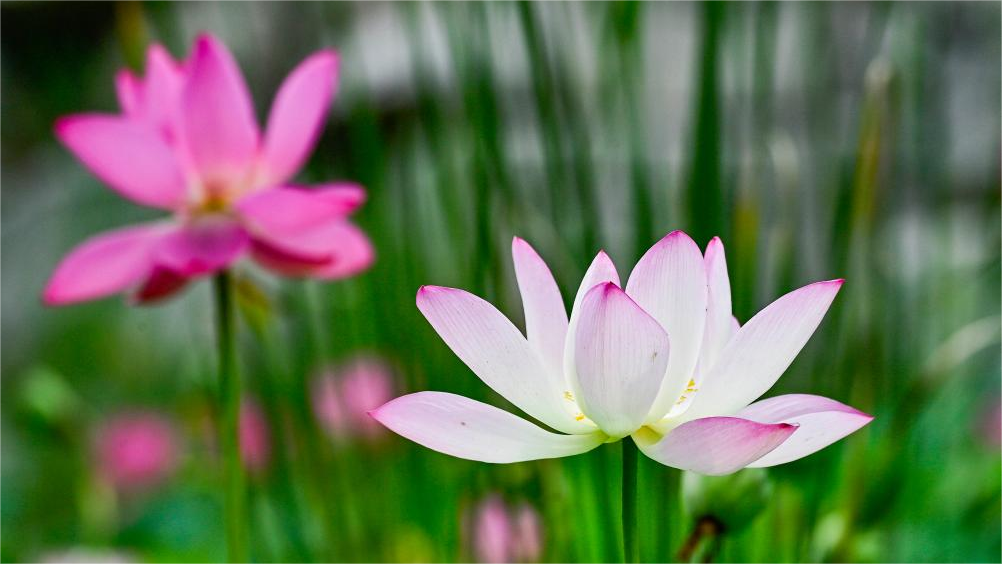Young researchers devoted to protecting endangered tree species in SW China's Chongqing
Devoted to protecting Sichuan thuja, a rare and endangered tree species unique to China, a team of young researchers has braved difficult working conditions and played multiple roles in various conservation scenarios, finally making notable progress in expanding the population of the trees.
Sichuan thuja is mainly distributed at an altitude of 1,300 meters to 2,100 meters in the Xuebao Mountain national nature reserve in Kaizhou district, southwest China's Chongqing Municipality. The population of the trees was less than 10,000 when they were first found in the Xuebao Mountain.

Members of a research team of the Xuebao Mountain national nature reserve in Kaizhou district, southwest China's Chongqing Municipality, collect seeds of Sichuan thuja on a cliff. (Photo courtesy of the interviewees)
Thanks to continuous efforts made by the nature reserve and the local government, over 750,000 Sichuan thuja have been reintroduced to the wild.
Not long ago, the adaptive cultivation of 1,000 Sichuan thuja saplings selected and sent by the research team were completed in Qamdo city, southwest China's Xizang Autonomous Region, which is expected to contribute to the ex-situ conservation of rare and endangered plants.
"As a relict species, Sichuan thuja possesses remarkable resilience. Its inherent ability to resist and adapt to climate change and geographical shifts surpasses that of ordinary plants, harboring irreplaceable genetic resources and research value," said Yang Quan, director of the administrative affairs center of the nature reserve.
"Expanding the cultivation of Sichuan thuja to ecologically vulnerable areas could greatly help with soil erosion control and vegetation restoration," Yang pointed out.
Yang came to work in the Xuebao Mountain in 2002. He has taken part in preparations for the establishment of the Xuebao Mountain national nature reserve, and has served as the head of the nature reserve's research team.
Consisting of 10 members, the team aims to cultivate more than 1.2 million Sichuan thuja saplings this year, according to Yang.

Photo shows Sichuan thuja cuttings planted for cultivating saplings by a research team of the Xuebao Mountain national nature reserve in Kaizhou district, southwest China's Chongqing Municipality. (Photo courtesy of the interviewees)
"Our work seems ordinary, but it actually requires persistence and perseverance," Yang said, explaining that the team faced numerous challenges in the preliminary field research, including difficult terrain and wildlife encounters.
"My young colleagues found the work here totally different from what they had expected. They found that we needed to live in the mountains and forests," Yang recalled.
Yet the harsh working conditions didn't deter the young researchers. Instead, they worked tirelessly on various aspects of Sichuan thuja conservation, finally improving the success rate of cutting propagation from 5 percent to over 90 percent through over 10 years of experimentation, while making efforts to protect all the fauna and flora species of the entire nature reserve.
In 2020, the research team set up a scientific research cooperation platform based on the nature reserve in a bid to carry out the rescue and propagation of rare and endangered animal and plant species represented by Sichuan thuja in a more in-depth manner.
In 2022, while ensuring the smooth operation of daily management tasks, staff members of the nature reserve worked hard for four consecutive months to construct greenhouses for the large-scale propagation of Sichuan thuja. They ate in the fields and slept on the construction site, finally building 12 automated and intelligent greenhouses.
Each of the members of the research team has a bachelor's degree or above, Yang said, noting that the team is not afraid to tackle academic challenges.
Last year, the team published three papers on Sichuan thuja conservation in domestic and foreign journals, according to Yang.
Photos
Related Stories
- 138-year-old pear tree in full blossom in NE China
- A look at China's green development
- Tidal tree printed on the earth
- Short-legged baby elephant stumbles across tree trunk
- Cherry blossoms bloom in Southwest China
- China launches big data management platform for its ancient, famous trees
- Ancient cypress trees preserved in section of road system, SW China's Sichuan
- Discovery of giant cypress in SW China refreshes Asian record of tallest tree
- Stunning view of blooming flame trees across SE China's Xiamen
- Science-based measures implemented to protect old, valuable trees
Copyright © 2024 People's Daily Online. All Rights Reserved.









